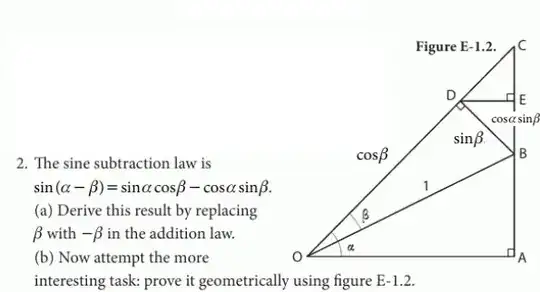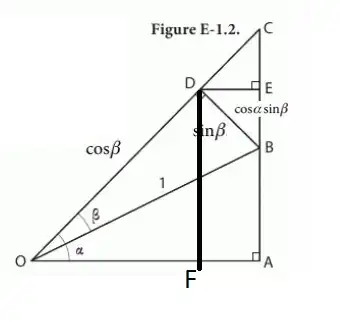I can't solve the following problem (From the book: The Forgotten Art of Spherical Trigonometry):

I can't manage to prov it geometrically.
I could get that I have to find AB and the values indicated in the diagram. I also think that D angle in DCE is equal to alpha as B in BED is, making DCE and BED similar, but then I always get very complicated calculation when I try to give a dimension to CE or DC.
How it is the smart way?
Thanks
